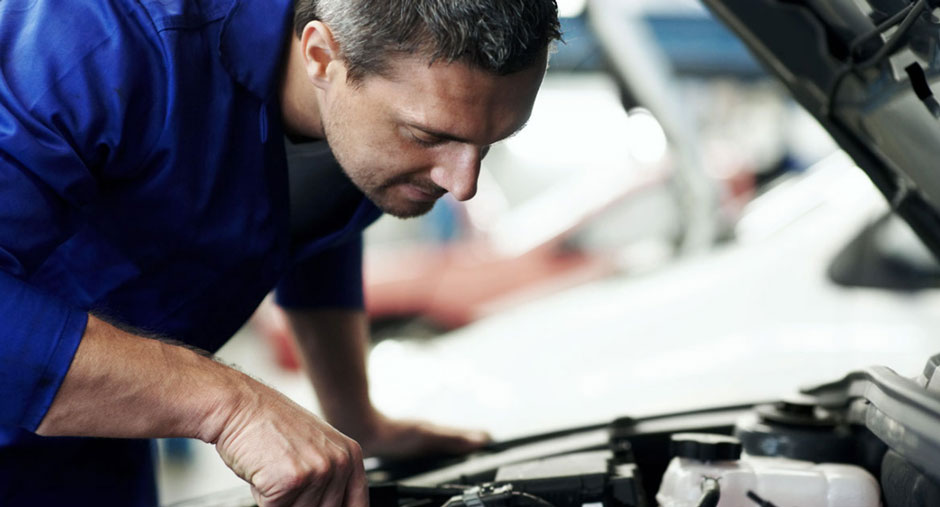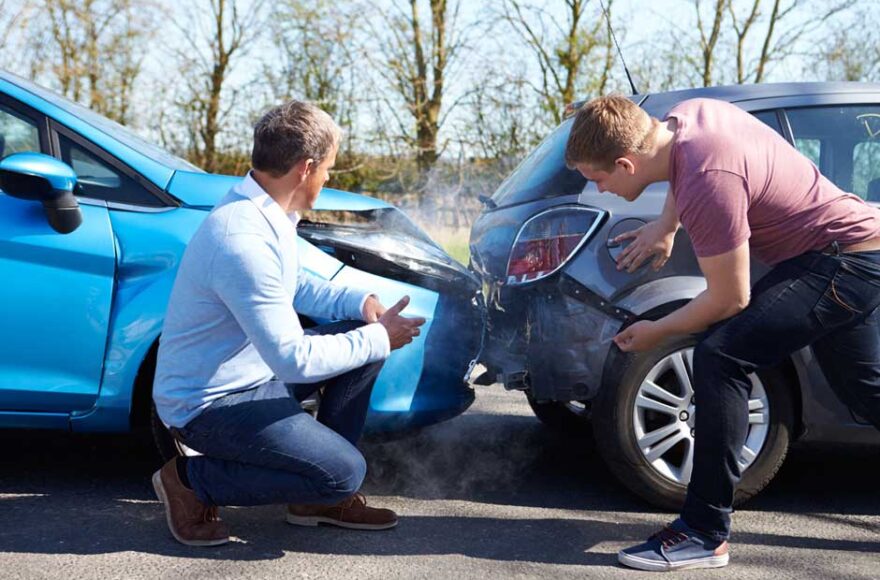Revving Up Safety: The Crucial Role of Collision Repair Procedures in Modern Cars

A collision can leave more behind than just a scratched bumper. When your car takes a hit, hidden damage to its frame, sensors, and structural components can compromise safety on the road. Proper collision repair goes beyond surface fixes, it restores the engineered crash performance that protects you and your passengers and supports modern car safety systems.
In this article, we guide you through collision repair procedures and auto body repair workflows that technicians follow to bring modern vehicles back to factory standards. You will learn how:
- Technicians assess visible and hidden damage before writing an accurate repair plan
- Structural repair tools and alignment jigs restore original frame geometry
- Advanced safety systems like airbags, cameras, and radar are diagnosed and recalibrated
- OEM parts and certified training ensure each repair meets manufacturer benchmarks
- Insurers, repair shops, and data-driven tools work together to preserve your car’s crashworthiness
By the end, you’ll see why each repair stage, from disassembly to final inspection, matters for modern car safety. Ready to see how collision repair starts? Let’s dive into the first main section: Understanding Collision Repair Procedures.
Understanding Collision Repair Procedures
Collision repair procedures, also known as auto body repair workflows, unfold in a structured process to restore vehicle safety and function. Technicians use these six stages to return your car to its original condition:
- Damage Assessment: Visual and scan-based inspection to identify panel and hidden structural damage
- Disassembly: Remove panels and components to uncover underlying issues and support accurate estimates
- Parts Ordering: Order OEM or certified aftermarket panels, sensors, and hardware to match repair standards
- Structural Repair: Use hydraulic straightening, laser-guided jigs, and welding to restore frame geometry
- Paint & Protection: Apply primer, seal seams, and finish basecoat and clear coat for durability and corrosion resistance
- Reassembly & Checks: Reinstall components, then perform dimensional, safety system, and corrosion inspections
Frame and Structural Repair
Initial Assessment and Teardown
Inspectors remove damaged panels to reveal hidden structural issues. Shops document any updates and work with insurers on precise estimates before moving forward.
Alignment and Welding
Hydraulic straightening restores original frame geometry. Laser-guided jigs and 3D imaging align unibody sections to factory specifications. Technicians weld replacement panels and torque-to-yield bolts to preserve crashworthiness and support vehicle safety.
Safety System Diagnostics and Repair
After structural work, technicians begin advanced driver assistance systems repair. They scan the SRS module and clear fault codes. Impact sensors are replaced, and ADAS cameras and radar units are recalibrated. Seatbelt pretensioners and airbag control modules are tested to ensure proper deployment. These steps confirm car safety features function as designed.
Paint, Corrosion Protection & Finish
Repaired or new panels receive epoxy or zinc-rich primer and seam sealer. Technicians apply basecoat and clear coat in climate-controlled booths. Paint thickness gauges verify uniform coverage and long-term corrosion resistance.
After reassembly, a comprehensive final inspection combines laser dimensional checks, non-destructive weld tests, and ultrasonic corrosion scans. Teams verify ABS function, airbag readiness, and ADAS sensor accuracy to confirm the vehicle meets manufacturer safety standards before returning to the road.
Impact on Modern Car Safety and Crashworthiness
Restoring a vehicle’s crashworthiness means more than fixing dents. It requires precise alignment of energy-absorbing structures, fresh safety-system components, and final validation against OEM benchmarks. Properly repaired crumple zones and tested restraint systems directly impact occupant survival rates and injury severity in real-world collisions.
Crumple Zones & Structural Integrity
Modern designs rely on controlled deformation in front and rear crumple zones. A frame-straightening machine realigns the chassis to factory dimensions.
Technicians then fit OEM or premium aftermarket panels to preserve the engineered deformation patterns. Non-destructive ultrasonic inspections check weld-bond quality and confirm residual deformation stays within OEM tolerance. This process maintains structural stiffness and exact energy absorption during impact.
Airbag & Seatbelt Functionality
Ensuring proper airbag and seatbelt function, key car safety features, requires systematic replacement and calibration. During repair, all damaged Supplemental Restraint System components, airbags, seatbelt pretensioners, and impact sensors, are removed and replaced with new units.
Technicians calibrate the airbag control module, set torque settings to manufacturer values, and clear fault codes. A deployment test confirms timing and sensor amplitude thresholds meet OEM standards, ensuring occupants receive full protection in a crash.
Post-Repair Crash Testing & Certification
Collision centers may follow FMVSS frontal impact protocols or Euro NCAP measurement points. Some shops pursue I-CAR Gold Class validation or OEM certification.
Certified shops also record calibration steps for ADAS cameras and radar when relevant, linking structural integrity to advanced safety features. Detailed documentation of test results and calibration records confirms the vehicle matches its original crash performance benchmarks before returning to the road.
OEM Certification and ADAS Recalibration
Ensuring modern vehicles regain their full safety performance means more than replacing damaged panels. It requires certified technicians, factory-approved parts, and precise sensor calibration for advanced driver assistance systems.
I-CAR & OEM Training Standards
Collision repair centers pursue I-CAR Gold Class or OEM certification to verify technician expertise. Training programs cover:
- Vehicle structure repair to OEM tolerances
- ADAS system theory and fault diagnostics
- Hands-on calibration of radar, camera, and lidar modules
Certified technicians follow manufacturer curricula and use approved tooling. This training reduces warranty risk and ensures every recalibration step meets factory requirements.
Use of Factory-Approved Parts
Factory-approved parts maintain original fit, finish, and system compatibility. Additionally, adherence to oem collision repair procedures ensures every component replacement aligns with factory specifications. In ADAS-equipped vehicles, even small deviations in lens geometry or radar housing can cause faulty readings. Benefits of OEM parts include:
- Guaranteed sensor alignment and mounting accuracy
- Matching electrical connectors and software identifiers
- Retained corrosion protection and structural integrity
Aftermarket alternatives may lack precise tolerances or the correct firmware flags, impacting both crash performance and advanced safety functions.
ADAS Sensor Calibration Procedures
Accurate sensor calibration for advanced driver assistance systems repair requires a controlled process. Typical steps include:
Static Calibration
- Position vehicle on a level surface within the recommended distance from calibration targets
- Install manufacturer-supplied targets or reusable patterns
- Verify camera and radar line of sight using a factory scan tool
- Execute guided routines to align sensor axes
Dynamic Calibration
- Conduct a road-test at a specified speed range on a straight path
- Monitor live data feed for lane keep, adaptive cruise, and collision warning inputs
- Confirm error codes clear and sensor fusion parameters settle within OEM limits
Both static and dynamic procedures must be documented in repair records. This ensures system reliability, maintains manufacturer warranty, and restores the vehicle’s original safety capabilities.
Insurance Coordination and Value Preservation
Working with insurers and documenting every step are key to preserving your vehicle’s safety and market price during car accident repair. Clear communication and meticulous records safeguard both your car’s crashworthiness and resale value in auto body repair.
Direct Repair Agreements
Many auto body repair shops join an insurer’s Direct Repair Program to streamline approvals. Technicians submit photo evidence, a detailed repair plan, and cost estimates directly to the appointed adjuster. This coordinated workflow reduces back-and-forth, cuts administrative delays, and ensures OEM procedures and parts receive insurer sign-off before work begins.
Detailed Invoicing for Resale Value
A transparent repair plan lists every panel, sensor, and calibration step. Itemized invoices that reference OEM part numbers and certification standards document structural alignment, paint finish, and ADAS recalibration. Including labor hours, material costs, and calibration reports creates an audit trail that reassures future buyers and dealerships the vehicle meets factory specs.
Rental Cars & Repair Turnaround
Most insurance policies cover a rental car while repairs are underway. Shops pair accurate timeline estimates with insurer authorizations to minimize downtime. Prompt attention prevents paint chips and rust, stops minor damage from escalating, and maintains resale value. If repairs extend beyond the original estimate, timely negotiation with the carrier can secure additional rental coverage.
Prompt collaboration with your insurer not only speeds approval but also protects your investment by returning the vehicle to pre-accident condition as efficiently as possible.
Innovative Technologies in Collision Repair
Modern collision centers leverage digital tools and data to improve accuracy, vehicle safety, and turnaround time. These innovative collision repair procedures integrate automotive safety technology and data-driven insights.
AR-Guided Repair Processes
In AR-guided collision repair procedures, augmented reality headsets overlay step-by-step repair instructions directly on the vehicle frame. Technicians follow 3D visual cues to align panels, spot weld locations, and confirm torque settings. Remote experts can join the workflow to provide live feedback, reducing miscommunication. This hands-on guidance cuts errors and training time and ensures conformance to OEM specifications.
Predictive Telematics Analytics
This use of predictive telematics analytics, an example of cutting-edge automotive safety technology, combines onboard data with high-resolution imaging to detect structural damage beyond the visible surface. Algorithms analyze crash forces and vehicle sensors to predict hidden frame issues and estimate parts needs.
Integrated cost estimation tools use damage models to generate accurate repair quotes in minutes. Early diagnostics streamline resource planning and reduce cycle times.
EV Battery Safety Protocols
Repairing electric vehicles demands strict high-voltage procedures. Technicians use insulated tools and follow lock-out/tag-out steps to isolate battery packs before bodywork begins. Specialized EV training covers battery shutdown, isolation methods, and protective gear requirements to mitigate electric shock and fire risks. Strict documentation of lock-out/tag-out and battery discharge tests ensures compliance with manufacturer guidelines.
Data-Driven Post-Repair Monitoring
After repair, shops collect vehicle telematics and onboard diagnostics to verify sensor calibration and structural integrity over time. Data analytics platforms track ADAS performance, remaining part life, and fault trends. Integration with shop management systems enables automated reporting of warranty data and maintenance alerts. Proactive alerts help technicians address drift or anomalies before they impact safety.
Conclusion
Proper collision repair does more than restore your car’s appearance. It brings back the engineered safety that protects you and your passengers.
Here are the key takeaways:
- Thorough damage assessment and disassembly in collision repair procedures uncover both visible and hidden issues
- Structural repair tools and laser-guided alignment restore original frame geometry for optimal vehicle safety
- OEM parts, certified training, and I-CAR standards ensure every component meets factory benchmarks for car safety features and crashworthiness
- Safety systems such as airbags, seatbelts, ADAS cameras, and radar require precise diagnostics and advanced driver assistance systems repair calibration
- Clear insurance coordination and detailed documentation preserve resale value and streamline car accident repair
- Emerging automotive safety technology such as AR guidance, predictive analytics, and EV battery protocols boost accuracy and efficiency
By following each collision repair stage, from teardown to final inspection, you ensure crumple zones deform correctly, sensors read accurately, and restraint systems deploy as designed. This holistic process protects crashworthiness and maintains your vehicle’s long-term value.
Armed with this knowledge, you can choose a repair shop for car repair after accident that follows OEM procedures, uses factory-approved parts, and documents every step. When your car is serviced with these standards, you’re not just fixing damage, you’re revving up safety for every drive.


